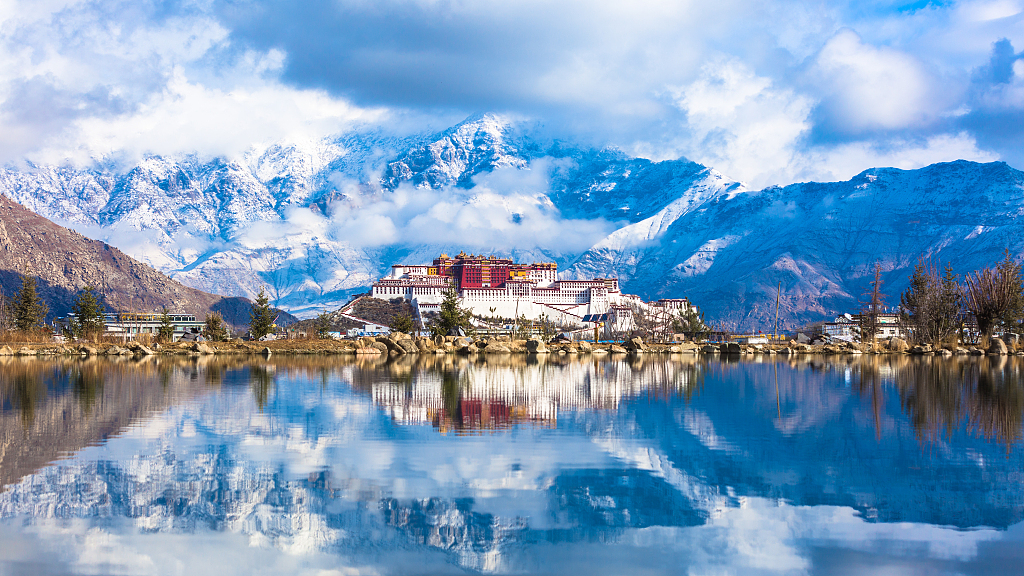01:24

Southwest China's Tibet Autonomous Region has been at the forefront of the country's efforts to promote green development, making remarkable strides in the conservation of the ecosystem over the past five years.
With the emphasis on promoting the development of ecological civilization, Tibet has stepped up protection of its natural resources such as grasslands, wetlands and forests as it continues to balance economic growth and ecological conservation.
The past few years has seen the area of water bodies in the Lalu Wetland National Nature Reserve of Lhasa City expand by around 30 percent and the number of migratory birds increase to over 15,000 in 2019, more than doubling the number seen back in 2015.
Efforts made to protect the ecosystem and upgrade infrastructure in the 6.2-square-kilometer reserve have provided rich economic dividends and greatly improved people's well-being.
"We have felt continued improvement in the sanitation, ecology and infrastructure in the Lalu Wetland Reserve whenever we come for a walk and fresh air. The environment is better, and our sense of happiness is stronger," said Phurbu Tashi, a resident of Lhasa.
In the past five years, Lhasa has achieved a green transformation through afforestation and management of its water resources.
"We've connected the Potala Palace and the Norbulingka Palace, two world cultural heritage sites, through the expansion of our river system which covers a combined 72.24 kilometers with the newly added 36-kilometer-long water bodies measuring 26 hectares in total," said Lu Congfu, deputy mayor of Lhasa.
Hongla Mountain National Nature Reserve in Markam County has over the years seen the population of the Yunnan snub-nosed monkey – a severely endangered species – steadily grow, thanks to a special national fund and the enhanced awareness of the residents.
In addition to the monkeys, the reserve is home to other animals under first-class national protection, such as the clouded leopard, snow leopard and wild ox. In all, some 440 kinds of vascular plants and nearly 160 types of vertebrates have been found in the reserve.
In recent years, the State Administration of Forestry has invested more than 40.63 million yuan (about nine million U.S. dollars) to improve infrastructure in the reserve, including construction of management and protection stations, monitoring points, a wildlife rescue center and the purchase of vehicles and equipment.
Efforts have also been made to greatly increase forest coverage in the Hongla Mountain area.
In recent years, local authorities have provided residents with 667,000 jobs related to ecological conservation and environmental protection.
So far, Tibet has designated a total of 538,800 square kilometers in 74 counties and districts for ecological conservation and built 47 nature reserves of various types with a combined area of 412,200 square kilometers, leading the country in nature reserve construction.
"People care the most about ecological conservation and sustainable development. So, we can say that the implementation of a series of environmental protection projects in the Qinghai-Tibet Plateau have set an example for similar efforts to promote ecological and environmental protection in the country at large," said Yao Tandong, academician from the Chinese Academy of Sciences and chief scientist with China's Second Scientific Expedition Team to the Qinghai-Tibet Plateau.
(Cover image via VCG)
(If you want to contribute and have specific expertise, please contact us at nature@cgtn.com.)